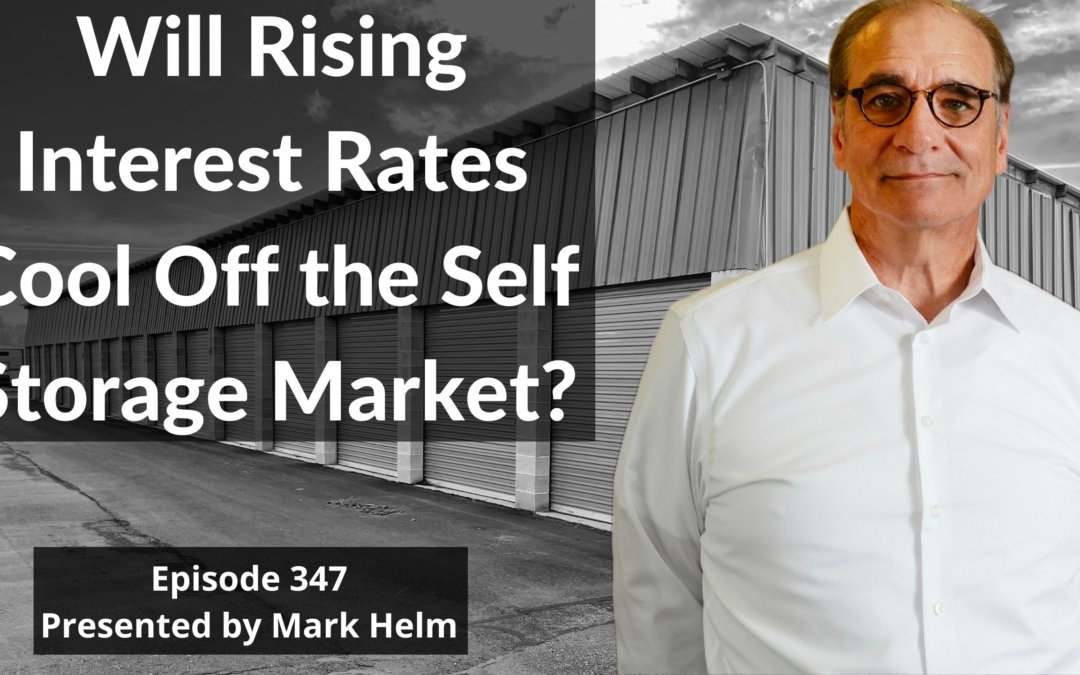Will Rising Interest Rates Cool Off Self Storage Market? Or at least the acquisition side of it?
In my opinion, that wouldn’t be all bad.
But I have my doubts.
Yes, yield curve inversion, a classic recession indicator, fired up in early July, but other “recessionary” factors are not present.
I am not an economist by any stretch, and many of you know more about it than I do. Still, one of the usual recession indicators is when shorter-term treasury instruments, such as the two-year Treasury Yield, move above the longer-term ones, like the Ten-Year Treasury Yield.
Apparently, that happened. I’m not one to keep my eye on it, although I know some who are. They were very loud about it a couple of weeks ago.
Apparently, most recessions are preceded by this.
Outward pressures on Yield Curves
If we step back and take a look, the Federal Reserve raised the federal rate by 150 basis points so far and has signaled they intend to do so by another .75 or so.
This is one of the few dials or levers they have to adjust inflation. Raise the cost of capital (money), thus slowing down the flow of money into the economy, thus hopefully leveling off or reversing the cost of rising goods and services.
This upward spiral of inflation over the past year, and the Fed’s response, have added upward pressure on the treasury yields (interest on treasury financial instruments), especially the shorter-term instruments.
Also, with the war in Ukraine, investors all around the globe are seeking lower-risk safer US debt, typically the ten-year treasury notes, thus keeping the interest rate on the ten-year yields low.
From what I can see and my limited knowledge of the subject, this is what is currently happening to affect yield curves. However, other classic recessionary indicators are not here.
Many Indicators Still Signal Growth
Employers continue to hire amid a drastic labor shortage. Over 372,000 jobs were created in June alone.
We currently have a historically low 3.6% unemployment rate.
Also, household debt compared to household income is still very low by historical standards.
Many of the normal recession indicators are not present.
What Does All This Mean for Self Storage?
First of all, for smaller investors, we will face a rising cost of money. Our loans will cost more with the higher interest rates.
For a while, this will be banging up against CAP rates which have been going down for about ten years.
It would be great if there were a direct correlation between rising interest rates and rising CAP rates, but it isn’t like that.
I think that (1) many banks have lots of cash on their balance sheets and will use this time to be “competitive.” Although their rates may be higher, they will not necessarily have to reflect the fed rate hike to move money out the door in loans and make a profit. And if you are a bank, moving money into self storage is one of the safer bets.
Also, (2) there is still a lot of money, institutional investors, who have to move large quantities of money into self storage. Imagine deploying 20 million dollars in the next month or quarter into deals, as many do.
This will keep the downward pressure on CAP rates, thus keeping prices higher than we may expect in a rising interest rate environment. At least for a little while.
Also, with the inflation, rental rates have continued to rise over the past year in almost every market. In most cases, rental rates have risen faster than operating expenses, thus boosting the value of facilities.
Yes, the self storage acquisition market may cool down, but it will most likely be a gradual cooling.
Conclusion (At Least for Today)
It may actually be harder for us smaller investors over the next quarter or two to buy self storage. But this doesn’t mean giving up. Just work harder.
Our cost of capital just went up, thus reducing our potential yields, even though pricing still remains high.
We are competing with players who have lots of money to spend and are more interested in deploying cash than necessary the yields the projects are going to spin off for the first few years.
So, I recommend looking for deals in smaller markets or looking at facility types aren’t highly looked at by these larger players.
These opportunities will be smaller, rougher projects, away from the primary markets.
This is where I see the opportunities today for smaller investors.
Underwrite with higher interest rates, and we are using higher CAP rates now in estimating future values on our ten-year cash flow statements.
There are still lots of value-add deals out there. We must be willing to travel further, underwrite safer, and most likely do self storage construction to expand or convert.
But it is still a great business for smaller investors. Especially in the upcoming decade as the industry consolidates. We stand to make a lot of money as we exit after our value-add plays to these guys with lots of money to spend.




Hmmm what about the long term trends and saturation?